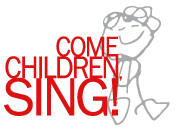CCS Activities are designed so that your child is drawn to the music itself. A variety of voices and instruments would draw your child’s attention to timbre—the sound of the various voices or instruments, diminishing his innate sense that draws him to meter and tonality. The consistency of voice, recorder and drum provides a common backdrop so that differences between meters and between tonalities can be better absorbed, yet with the contrast between instrumental and vocal presentations.
The single voice, recorder, and drum of CCS provide a consistent aural background for your own voice and play with your child—so that your voice and interaction with your child can take center stage, rather than the recording. For your child, the consistency of timbres in CCS Activities simply defines the “aural play space,” much like the color of the walls in your home.
Identifying the sound of voices or instruments in music or in language is a very different kind of skill, peripheral to understanding the aural content. Your child may be able to recognize the voice of a German friend, or the voice of your computer, but that doesn’t mean he understands the language spoken.
[For more about accompaniments to children’s songs, see “Do toys, tapes, or programs that use music nurture my child’s music development?”]
|

